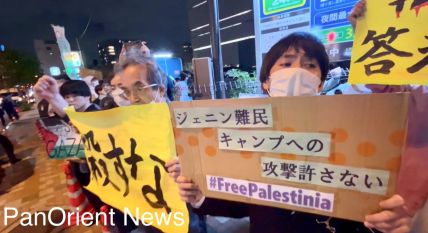|
|
Environment
Greenpeace Team Finds Higher Range of Radiation Level in Iitate, Fukushima
Monday, March 28, 2011

Fukushima - (PanOrient News) Greenpeace radiation experts said they have confirmed radiation levels of up to ten micro Sieverts per hour in Iitate village, 40 km northwest of the crisis-stricken Fukushima/Daiichi nuclear plant, and 20 km beyond the official evacuation zone, and these levels are high enough to require evacuation, the group said in a statement.
“The Japanese authorities are fully aware that high levels of radiation from the stricken Fukushima nuclear plant have spread far beyond the official evacuation zone to places like Iitate, yet are still not taking action to properly protect people or keep them informed them about the risks to their health”, Greenpeace radiation safety expert Jan van de Putte said.
The team measured radiation of between 7 and 10 micro Sievert per hour in the town of Iitate, on Sunday March 27 th. The levels detected refer to external radiation, and do not take into account the further risks such of ingestion or inhalation. The annual limit for accumulated dose is 1000 micro Sieverts, according to the statement.
The current official evacuation zone is 20km around Fukushima, while between 20km and 30km is an area where people are advised to stay indoors or "encouraged" to leave.
“It is clearly not safe for people to remain in Iitate, especially children and pregnant women, when it could mean receiving the maximum allowed annual dose of radiation in only a few days. When further contamination from possible ingestion or inhalation of radioactive particles is factored in, the risks are even higher,” Jan van de Putte said.
“The authorities must stop choosing politics over science and determine evacuation zones around the Fukushima nuclear plant that reflect the radiation levels being found in the environment. In addition to coming clean on the true dangers of the current nuclear crisis, the smartest move for Japan and governments around the world is heavily invest in energy efficiency, and redouble their efforts to harness safe and secure renewable energy sources.”
Greenpeace team said they spent several days documenting radioactive contamination and dose rate levels in the areas north-west of the Fukushima evacuation zone (20km radius from nuclear plant) that have been most affected by the radioactive releases.
Separately, the Science Ministry said on Sunday that radiation levels 40 percent higher than the yearly limit for the general public has been detected just over 30 kilometers from the Fukushima Daiichi power plant. A reading of 1.4 millisieverts was taken on Wednesday morning in Namie Town northwest of the plant.
The government has not told residents outside the 30-kilometer radius of the plant to evacuate, or even to stay indoors. Someone staying outdoors for 24-hours at that location would exceed the annual limit of one millisievert. The limit is based on a recommendation by the International Commission on Radiological Protection, NHK reported.
The science ministry obtained the reading after monitoring 10 locations outside the 30-kilometer zone, following reports that relatively high levels of radiation were found outside that area.
Radiation exerts now say the amount of radiation detected does not pose a health risk. But they advise residents in the area to stay alert for any possible rise in radiation levels, because the power plant is not likely to stop releasing radiation any time soon, Japanese media reported.
Following the March 11 massive earthquake and tsunami, the reactors and the spent nuclear fuel tanks of the Nos. 1, 2 and 3 units of Fukushima nuclear plant lost their cooling functions. Their reactor cores also partially melted at the plant, possibly discharging radioactive substances. The No. 4 unit, meanwhile, had all of its fuel rods stored in the spent fuel tank for maintenance work, and the cooling functions of the tank were also lost.
To cool down the reactor cores or spent fuel tanks, massive amounts of seawater or freshwater have been injected such as by spraying water from outside the damaged part of the reactor buildings' outer shell.
The water injections appear to have somewhat helped to prevent the crisis from worsening, but efforts to restore power and enhance cooling efficiency at the crisis-hit nuclear power plant is showing slow progress partly due to the radioactive pools of water found at the Nos. 1, 2, 3 and 4 units.
PanOrient News
© PanOrient News All Rights Reserved.
|
|

